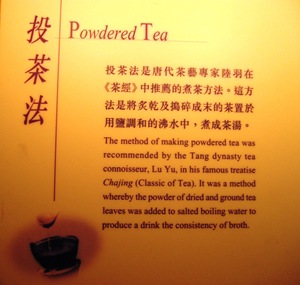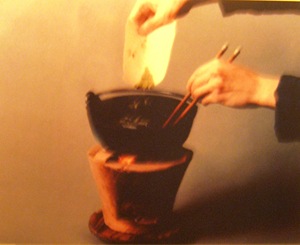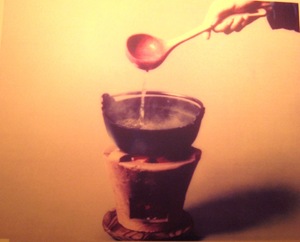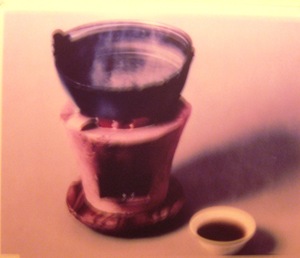A tea friend reminded me of Lu Yu’s advice to never turn down an invitation for tea. I have turned him down twice because of scheduling difficulties, but his advice is good and I find myself being more aware of trying to accept invitations for tea.
______________________________________________
“I recommend that you don’t mention the year of your teas. To experts, it doesn’t mean much.”
She was quite busy that day, dually filling an order on the phone and preparing a pot of hot water for me. I had been excited to meet this tea expert after having read a bit about her over the years. Whenever I visit a new tea friend, I try to bring something special with me that I hope we will enjoy having together. The reason is not to show-off what I have in my collection, but because it is an uncommon occurrence to find kindred tea spirits that would understand both the brew and my intentions. I can share a special brew with any tea lover and we may enjoy its beauty together, but a long-time old-tea drinker will be able to connect with the brew in a more immediate and deep way. Through that, we too may be able to relate and connect and when we do, there is so much excitement and discussion. Rapture from a cup of tea.
A special tea, usually an older one for me, is a gift and a gesture of respect.
She continued: “I have many teas here that are as old and older than yours. Let’s have one of mine today, ok? You can save yours to drink with your friends.”
I smirked to myself inside of my head, thinking that her statement was akin to a parent saying to a child, “Aww, that’s nice sweetie. Now why don’t you run along and play?” I am certain, though, that this tea expert did not mean to be rude. She probably comes across many know-it-alls bringing low-quality tributes. We shared one of her brews, she taught me some more about her oolongs, and by the end of our time together, we did not linger in the realm of tea zen. 40 mins was my allotted time and as if on cue, the tea price list appeared and I walked out with a bag of tea that I was sold on.
______________________________________________
I was having tea at Floating Leaves some while back and a newer customer came in with a tea to share. It was a 1 year old Muzha Tieguanyin. The customer admitted that he didn’t know much about the tea, except that it tasted very good to him and he was looking for something similar. Being that he was a self-admitted tea newbie, I was pleasantly surprised to find that the tea was indeed very good. No wonder, he had bought it from Wistaria. Don’t discount the newbies, many of them are lucky to have excellent tastes when they start. Some of the rest of us have had to – or continue to – work a bit more to get there.
______________________________________________
I was in the Bay Area this past week and wanted to visit a tea friend that I owe much to. She was one of my first tea teachers. I brought with me some of my prized teas that I rarely share, but alas, last-minute business emergencies caused her to miss our meeting. I brought my old pu’er to our designated spot and shared it with some new tea friends. We had a great time, but I lamented the fact that my friend was not there to share the occasion with us. I asked the tea server if he would be so kind as to save a cup of the tea for her to enjoy at another time. Following the last of my requests, he simply stated that my friend, a long-time tea lover and tea businessperson, has had many teas in her life and had certainly had one as old as mine. Unsure of when she would visit again, a cup of saved tea would be left to sit indefinitely. In short – my tea would not be missed. A tea that has sat for 40 years can surely survive a week in the fridge, I thought, but I was not going to have my way. There was to be no affinity between the brew and its intended drinker that day.
It is not every day that one has the opportunity to try such a well-aged and rare tea, one that also carried with it my gratitude and respect. Many people have tried 40 or 50 year old pu’ers, but there is a big difference between a 50 year old label cake and other pu’ers, for example. Age is only a part of the story. I regret that I could not share a special brew with my friend, to whom I owe many more pots of rare brews. Perhaps Lu Yu’s saying will remind us to meet for tea again in the future.
Drink good tea and enrich your life.















